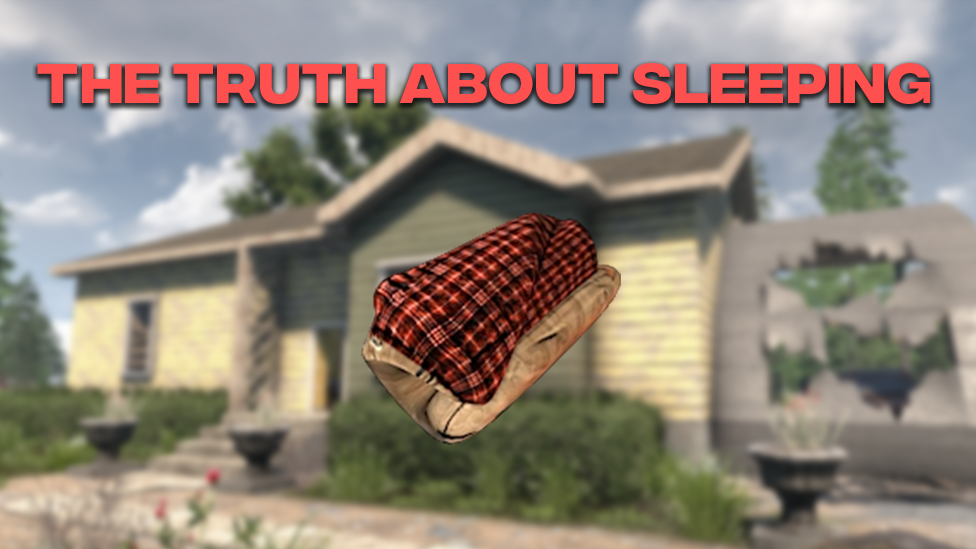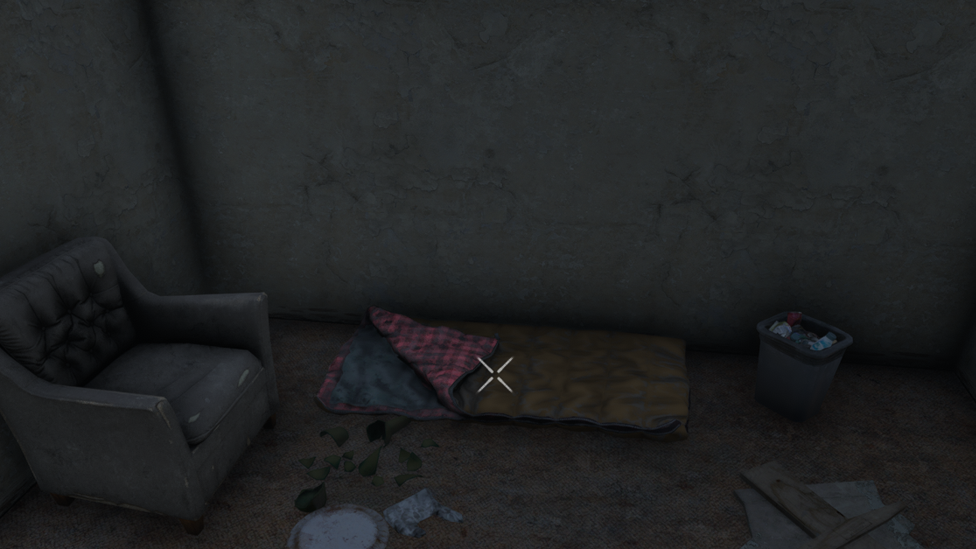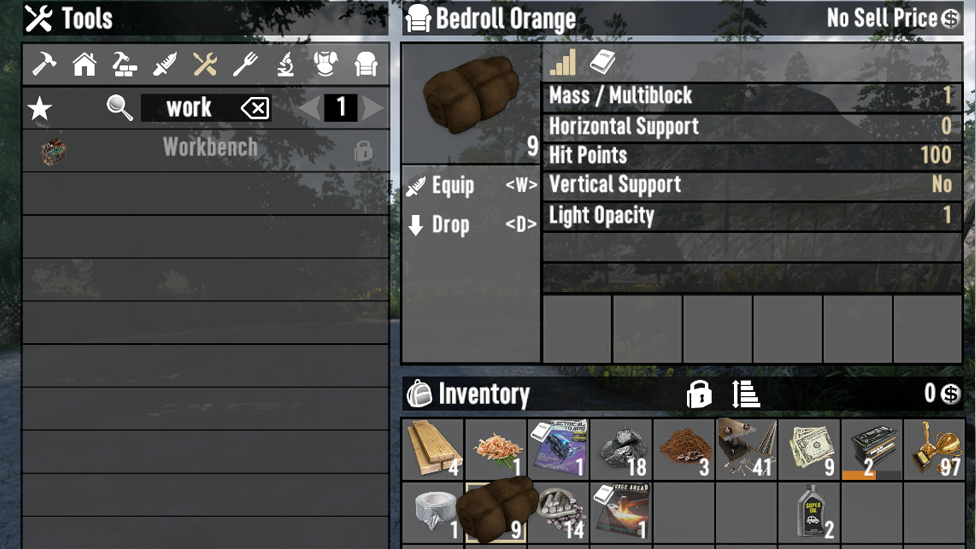7 Days to Die How to Sleep in Bedroll
7 Days to Die is no different from survival games in that they challenge you in creative ways. The 7D2D bedroll is among its immersive mechanics. You can’t sleep in the bedroll all night, as you would in other survival games, but you’ll need to know how it works to succeed in the game. We will explain how to use a bedroll in 7 Days to Die, from crafting and placing to wisely using it so that you survive the unforgiving terrain of 7 Days to Die.
7 Days to Die: The Truth About Sleeping

However, contrary to what you might expect, you can’t sleep in 7 Days to Die. There’s no conventional mechanic to skip nights in the game. Instead, you are respawned at your bedroll. It's an indispensable bit of gear because if you die, you can choose to respawn on or near your bedroll.
7 Days to Die does not have sleep mechanics for energy regen, nor time progression like other games do, but rather is very vigilant, especially at night. The design is unique in this respect as it encourages constant interaction with the game environment, not only to advance the plot but to live, and so teaches a survival-first mentality.
Crafting a Bedroll
One of the first things new players get to do is create a bedroll in 7 Days to Die, and it’s easy to do. To craft a bedroll, you need two things:
In the Survival menu, you can access the crafting recipe. When the bedroll is crafted, it should be placed strategically to take advantage of it as a respawn point.
Placing and Using a Bedroll in 7D2D
Placement of 7D2D Bedroll is key after crafting. To survive on respawn, position the bedroll in a safe and secure location. The best areas to set up are elevated or fortified areas that reduce your risk of zombie encounters. Your placed bedroll is marked on the 7 Days to Die map by the game, with a bed icon to help you find it during exploration. You remember you can spawn on or near your bedroll on death, but a bad placement of your bedroll could leave you vulnerable.
Moreover, placing a bedroll provides an added benefit: zombie deterrence. Within a 31x31 meter area around your bedroll, they won’t spawn, giving you a temporary safe zone. The bedroll becomes a respawn tool and defensive asset.

Strategic Uses of Bedrolls
In 7 Days to Die, strategic usage of bedrolls is pivotal to survival and adaptability. The second thing is to get multiple bedrolls around different places so you’re not stuck at one respawn point. Take, for instance, if you're trying to explore the farthest reaches of the 7 Days to Die map or the richest areas. Having a bedroll close by will cut down on the time it takes to get back to your starting point once respawning.
This strategy also helps with quests, as if you die, you don’t have to spend downtime running back to wherever bedrolls were placed. You only have one bedroll as your active respawn point, but you can move locations as you progress through the exploration, maintaining the flow of your 7 Days to Die gameplay and lowering risk.
Incorporate the bedroll into your base setup as much as possible. A primary respawn point is a logical place for your base, which is typically your base of crafting and storage. Thus, this area is secured with fortified walls that contain traps or spikes for safe respawn.
Wherever you choose to place your bedroll, it will keep zombies away within its protective radius but also allow you to get to weapons, medical supplies, or food immediately. Having your bedroll further elevated or enclosed further increases its safety so that you are shielded from unexpected attacks during horde nights or invasions.
Mobility planning with 7D2D bedrolls is essential for explorers to survive when venturing far from home. Having extra bedrolls means you can place temporary respawn points in risky zones where you could be looting or crossing enemy territory.
The more you move around the map, updating your active bedroll means you won’t have to backtrack so much with death, making progress more continuous and giving you a strategic edge over any hostile environments.
Bedroll Management Advanced Tips
Keep a Backup Bedroll: Many things can go wrong in 7 Days to Die; you can lose your primary bedroll, and you can be left vulnerable. Have spare materials to craft another.
Coordinate in Multiplayer: Teammates can place bedrolls on common bases to create communal safe zones, as in multiplayer games.

Frequently Asked Questions
Conclusion
Surviving the 7 Days to Die’s challenging world rests on mastering the bedroll mechanics. Although it doesn’t act as sleep, it plays a huge role in your survival strategy as a respawn point and a zombie deterrent. With smart positioning and protection of bedrolls, players can boost their resilience and survive against the ever-changing game of threats. Be it making your first bedroll or strengthening a foundation around it, in this unforgiving post-apocalyptic landscape, preparation and strategic planning are your best allies.
Get the best experience with 7 Days to Die dedicated server hosting from Scalacube. Play with seamless gameplay, flexible customization, and powerful server management for a better multiplayer experience.
7 Days to Die: The Truth About Sleeping

Make Your Own 7 Days to Die Server
However, contrary to what you might expect, you can’t sleep in 7 Days to Die. There’s no conventional mechanic to skip nights in the game. Instead, you are respawned at your bedroll. It's an indispensable bit of gear because if you die, you can choose to respawn on or near your bedroll.
7 Days to Die does not have sleep mechanics for energy regen, nor time progression like other games do, but rather is very vigilant, especially at night. The design is unique in this respect as it encourages constant interaction with the game environment, not only to advance the plot but to live, and so teaches a survival-first mentality.
Crafting a Bedroll
One of the first things new players get to do is create a bedroll in 7 Days to Die, and it’s easy to do. To craft a bedroll, you need two things:- 10 Plant Fibers: Can be easily harvested by using your hands or tools to gather foliage.
- Crafting time: Approximately two seconds.
In the Survival menu, you can access the crafting recipe. When the bedroll is crafted, it should be placed strategically to take advantage of it as a respawn point.
Placing and Using a Bedroll in 7D2D
Placement of 7D2D Bedroll is key after crafting. To survive on respawn, position the bedroll in a safe and secure location. The best areas to set up are elevated or fortified areas that reduce your risk of zombie encounters. Your placed bedroll is marked on the 7 Days to Die map by the game, with a bed icon to help you find it during exploration. You remember you can spawn on or near your bedroll on death, but a bad placement of your bedroll could leave you vulnerable.Moreover, placing a bedroll provides an added benefit: zombie deterrence. Within a 31x31 meter area around your bedroll, they won’t spawn, giving you a temporary safe zone. The bedroll becomes a respawn tool and defensive asset.

Strategic Uses of Bedrolls
In 7 Days to Die, strategic usage of bedrolls is pivotal to survival and adaptability. The second thing is to get multiple bedrolls around different places so you’re not stuck at one respawn point. Take, for instance, if you're trying to explore the farthest reaches of the 7 Days to Die map or the richest areas. Having a bedroll close by will cut down on the time it takes to get back to your starting point once respawning.This strategy also helps with quests, as if you die, you don’t have to spend downtime running back to wherever bedrolls were placed. You only have one bedroll as your active respawn point, but you can move locations as you progress through the exploration, maintaining the flow of your 7 Days to Die gameplay and lowering risk.
Incorporate the bedroll into your base setup as much as possible. A primary respawn point is a logical place for your base, which is typically your base of crafting and storage. Thus, this area is secured with fortified walls that contain traps or spikes for safe respawn.
Wherever you choose to place your bedroll, it will keep zombies away within its protective radius but also allow you to get to weapons, medical supplies, or food immediately. Having your bedroll further elevated or enclosed further increases its safety so that you are shielded from unexpected attacks during horde nights or invasions.
Mobility planning with 7D2D bedrolls is essential for explorers to survive when venturing far from home. Having extra bedrolls means you can place temporary respawn points in risky zones where you could be looting or crossing enemy territory.
The more you move around the map, updating your active bedroll means you won’t have to backtrack so much with death, making progress more continuous and giving you a strategic edge over any hostile environments.
Bedroll Management Advanced Tips
Keep a Backup Bedroll: Many things can go wrong in 7 Days to Die; you can lose your primary bedroll, and you can be left vulnerable. Have spare materials to craft another.Coordinate in Multiplayer: Teammates can place bedrolls on common bases to create communal safe zones, as in multiplayer games.

Frequently Asked Questions
Can you sleep in 7 Days to Die?
There are no sleeping mechanics in 7 Days to Die, no. Instead, respawn points come in the form of bedrolls.
How do you craft a bedroll?
Craft a plant fiber from 10 plant fibers in the Survival menu. It takes two seconds.
Why is the bedroll important?
Bedrolls are respawn points, prevent zombie spawns nearby, and are safe to be in a hostile environment.
Can bedrolls be reused?
Yes, so long as it hasn’t been destroyed or replaced with another bedroll placement.
Conclusion
Surviving the 7 Days to Die’s challenging world rests on mastering the bedroll mechanics. Although it doesn’t act as sleep, it plays a huge role in your survival strategy as a respawn point and a zombie deterrent. With smart positioning and protection of bedrolls, players can boost their resilience and survive against the ever-changing game of threats. Be it making your first bedroll or strengthening a foundation around it, in this unforgiving post-apocalyptic landscape, preparation and strategic planning are your best allies.Get the best experience with 7 Days to Die dedicated server hosting from Scalacube. Play with seamless gameplay, flexible customization, and powerful server management for a better multiplayer experience.
Make Your Own 7 Days to Die Server
Copyright 2019-2025 © ScalaCube - All Rights Reserved.